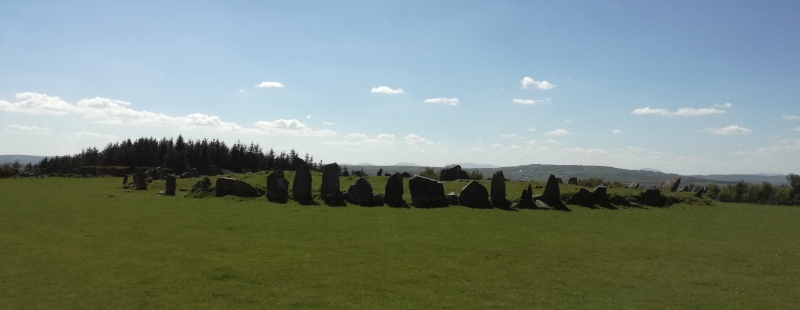Stop one in Co. Donegal. I read that this place was linked with Ballynoe before arriving. There are many similarities, but this place is hugely different.
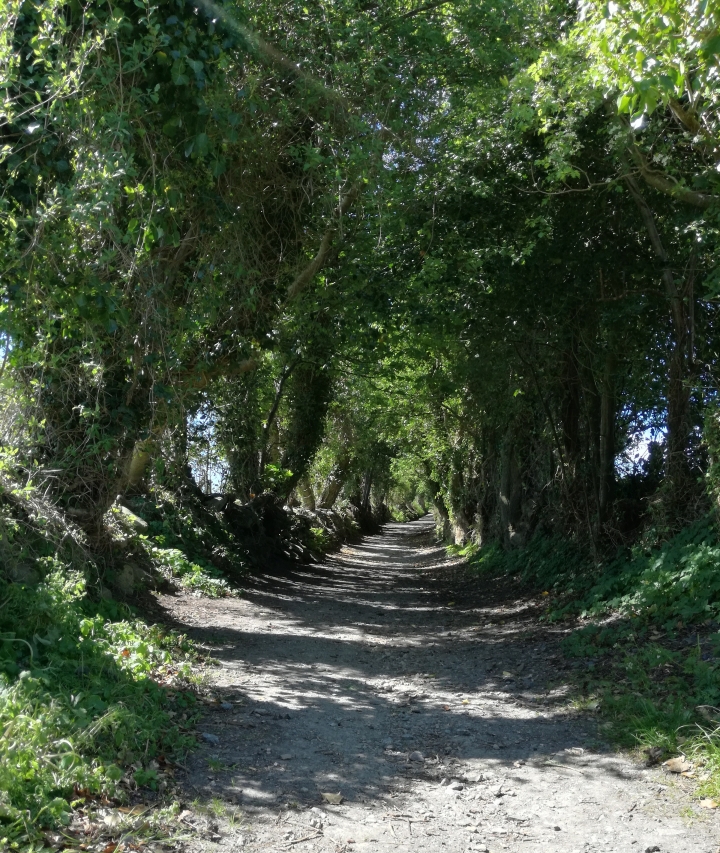
Like Ballynoe, there is a tunnel on the way in. This time wider and with more variety of trees along with the hawthorn and gorse.
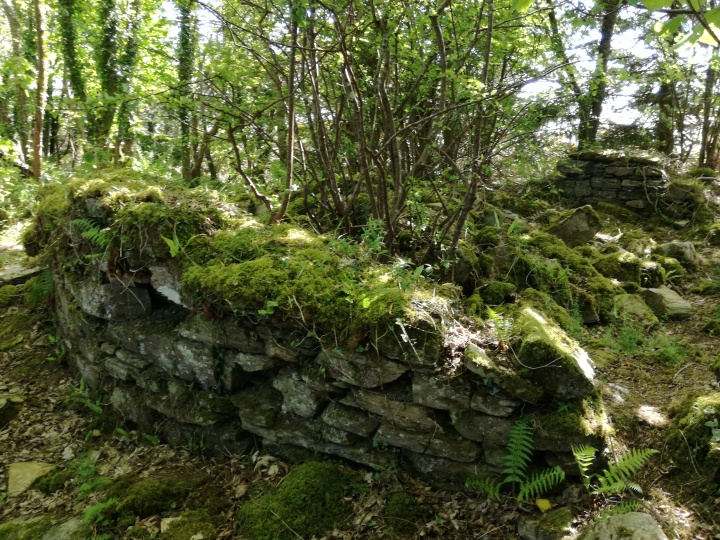
The ruins of a round, stone structure sits off the main path. From there, there are two parallel paths to take; one to the stones, another into a forest. My curiosity, of course, took me into the forest.
It had been a long drive from Co. Down, it had given me a lot of time to relax, listen to music and to think. On entering the pathway, all my thoughts faded. It was as if I was entering a different world.

The forest was made up of fir and pine trees. It was a beautiful place to wander around in. Natural pathways sloped downhill. I was surprised by the amount of quartz-like stone around. With Newgrange fresh in my head, I wondered if they had got there naturally. There were many other rocks. Thin, slate-like pieces leaned against the bases of trees, presumably washed up there.
The forest was guarded by a stone wall, hawthorn trees, sycamore trees and elm trees. An oak grove could be seen in a field nearby.
There was something quirky and unnatural about the place. On many occasions I felt like I was being watched. There was evidence of humans everywhere. I found horseshoe prints in the dirt. Why would horses be in such a crowded forest? I followed out of the trees into a field. There was a stone in the field that looked like a gravestone from the back.
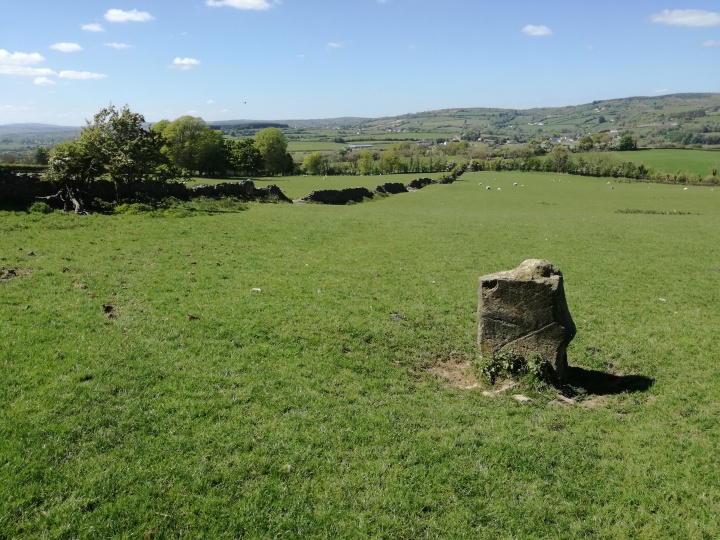
When I re-entered the forest, I found a deposit of strangely shiny rocks. They were slim and light. They looked as if they had been sprayed with silver paint. I turned one over and the other side was burnt. This forest was giving me more than I had the expertise for.
I walked back through towards the exit. Sheep’s wool was on many of the lower branches and the feathers of wood pigeons were on the ground. I found a few smashed bird eggs too.
Towards the exit a fire had been built. Two wheels and some pine sticks had been used as fuel. The word “DIVER” had been sprayed on two of the trees with silver paint, as well as a silver cock (of course!). I wondered if that was how the stones got their colour. Blue rope was tied about two and a half metres up one of the trees.
I left the forest and headed through the gate to the circle. I sat at one of the rocks, gathered my thoughts, and wrote some notes.

The circle is huge. It sits on top of a hill in an open field. The views around it are spectacular. I can see mountains in the distance, but I don’t know what they are. Compared to Down and Louth, this place feels foreign to me.
Further investigation revealed one of the hills nearby is Croaghan Hill, thought to be the resting place of the warrior Itha of the followers of Parthanón. Itha died at the battle of Mag Itha, a magical battle between the followers of Parthanón and the Fomorians.
The Fomorians came to Ireland following the flood and the followers of Parthanón came after. The Fomorians seem to represent chaotic forces, where the followers of Parthanón represent civilisation and agriculture.
Parthanón and his followers all died of plague in a single week after the battle. The Fomorians survived and continued to be represented throughout Irish mythology. They are closely linked with the Tuatha Dé Dannan, with whom they fight regularly.

The sign at the entrance says there are 64 stones. It also describes a stone head that was found at the circles. The head reminded me of the Tandragee Man, an idol to Nuada, a king of the Tuatha Dé Dannan.

Most of the stones are tilted outwards from the circle. My initial thought was that they would be easy to lean against to see a ceremony taking place in the centre. Two huge stones sit at the entrance. They are slightly off so as to create a clear entry for something.
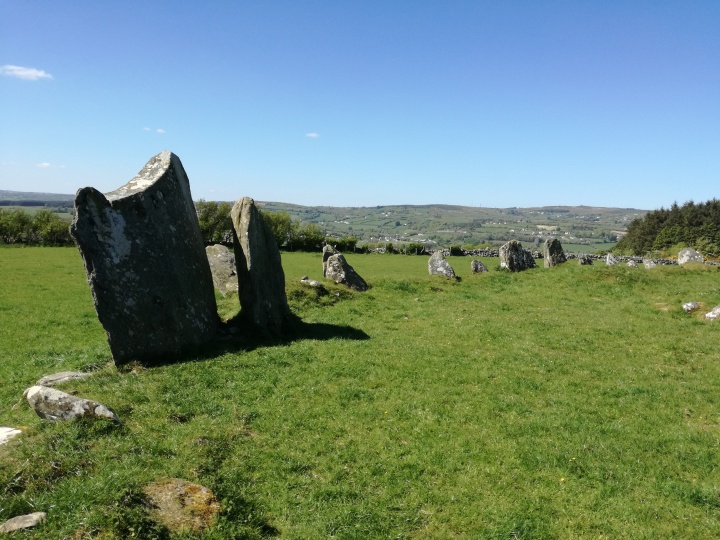
There is evidence of a fire having been burnt in the centre of the circle recently, probably in celebration of Bealtaine, the festival the stones are named after. Bealtaine (meaning bright fire) is a celebration of the summer. A cup-marked stone is supposed to line up with the sun in early May, when the festival is celebrated. One of the rituals involved in the festival of Bealtaine is to walk your livestock around a fire, or between two fires, to protect them from disease.
